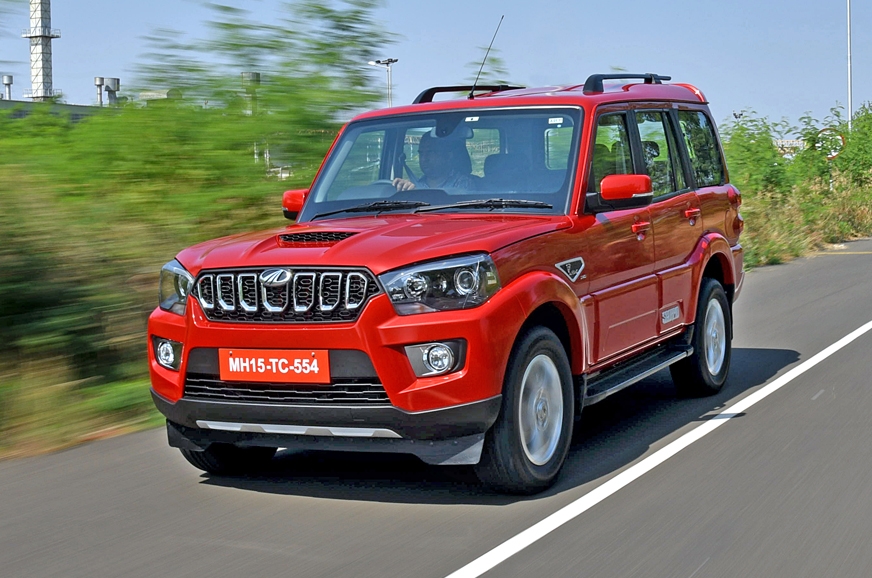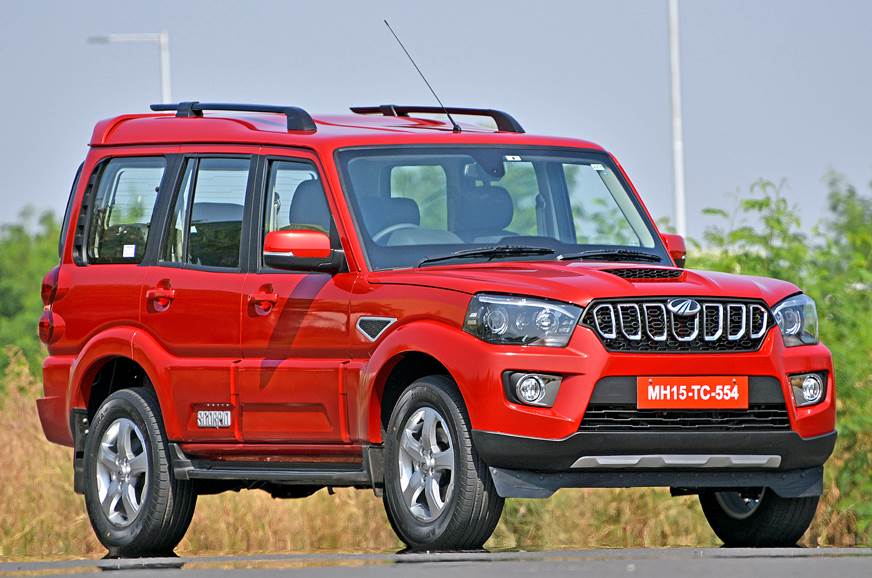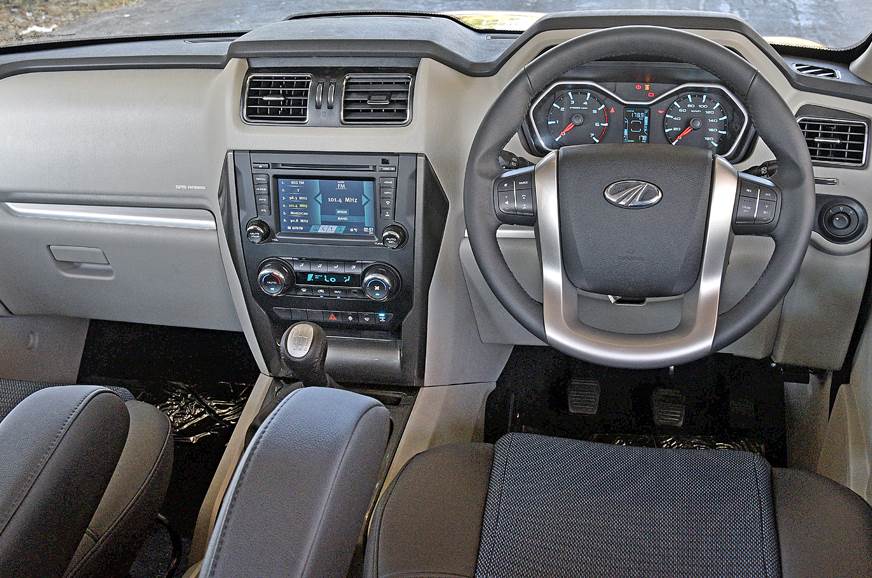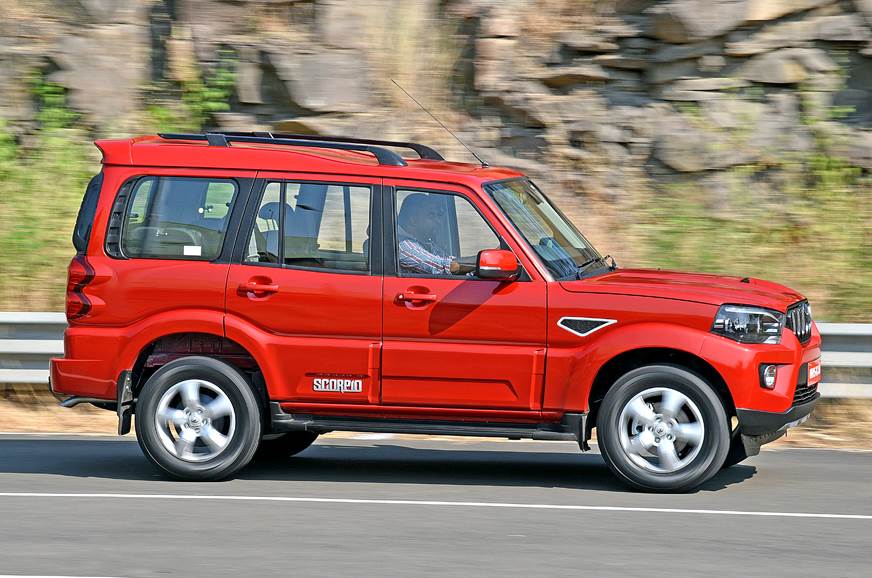
What is it?
The Scorpio’s 2.2 mHawk engine has always been one of the SUV’s biggest highlights. Refined and smooth for a big diesel engine, strong low-end response and great drivability were the plus points that endeared it to many. However, rev it hard and the strain would become quite apparent as the engine ran out of breath. This lack of top-end performance was quite evident, especially if you are driving and overtaking at highway speeds. Incidentally, many Scorpio customers too responded with a similar feedback.
As a result the Scorpio now has a new, more powerful engine variant. Mahindra has re-tuned the same 2.2-litre mHawk engine to now develop 140hp and 320Nm of torque, bringing the Scorpio to a similar level of performance as the current XUV500; though, the latter is expected to get a performance upgrade soon, which will further bump up its power.

What’s it like on the outside?
In terms of looks, Mahindra has not fiddled too much and the Scorpio still makes for a familiar sight. Up front, there’s an all-new grille which replaces the blade-like chrome slats of the previous model with a more traditional seven-slotted design. It also gets a redesigned bumper with new fog lamps, a new skid plate, subtly tweaked projector headlamps and ORVMs that now come integrated with side indicators.
The rear end has been cleaned up, the tailgate is all new and Mahindra has completely done away with the plastic appliqué that surrounds the number plate. The Scorpio’s already good-looking tail-lamps look better with a new red theme (from the earlier clear look).
Overall, the Scorpio’s nip and tuck job does enough make it look more contemporary and also lends it a hint of sophistication. Along with the new engine and design facelift, Mahindra has also added a new top-end variant called the S11, which features additional equipment. The new, more powerful mHawk140 engine will be available only in the S7 and S11 variants, along with the four-wheel-drive option. There’s a base S3 variant that will feature the m2DICR engine developing 75hp and 200Nm torque. Scorpio’s existing 120hp 2.2 mHawk engine, which also carries forward, will be available in the S5 and S7 trims. Sadly, there still is no automatic transmission on offer.

What’s it like on the inside?
The S11 variant gets new additions on the inside in the form of the dark grey faux-leather seat upholstery, embellished with a dark blue weave pattern that goes well with the cabin, and gear lever and steering wheel wrapped in the same faux leather.
Apart from this, the interiors don’t deviate from the current vehicle and everything seems familiar. The driver’s seat gives you a commanding view of the road and surroundings through its vast glasshouse. The plastic quality still leaves a lot to be desired; for example, the door handles feel like they could break off if you pull them too hard.
In terms of equipment, it gets a new dynamic parking camera that helps indicate the vehicle’s trajectory while parking. It is a nice feature to have if you are attempting a reverse manoeuvre with a vehicle the size of the Scorpio. Power windows get a delayed-operation feature post engine shut down, while the driver side window also gets an auto roll-up feature when you lock the vehicle. Also sure to come in handy are a couple of new utility spaces, including a mobile holder slot near the gear lever and a sunglass holder near the inside rear-view mirror.
Other features that are carried forward are the touchscreen infotainment system that impresses overall, but sadly does not feature Apple CarPlay or Android Auto, which, today, is fast becoming de rigueur. Micro-hybrid technology, a tyre pressure monitoring system, rain-sensing wiper and automatic headlamps also get carried forward.
In terms of safety, the Scorpio gets dual airbags and ABS on all variants except the base S3.

What’s it like to drive?
With the new mHawk140 engine, power is up by 20hp and torque by 40Nm, and this translates into a very visible increase in performance. Now equipped with a new Borg Warner turbocharger, the Scorpio feels so much more energetic than before and you can feel a surge of that 320Nm torque at around 1,500rpm and remains with you till about 3,500rpm before starting to taper down. While initial acceleration has definitely improved, the mid-range is now much stronger, which should be great for highway overtaking; Mahindra only allowed us a brief drive on the company test track so we’ll know more once we have it out on the open roads. Top-end whack is also better and the engine does not run out of breath like before. To adapt to the increase in power, Mahindra has also uprated the brakes by increasing the brake booster size.
The engine comes paired with an all-new six-speed gearbox; the additional gear is a boon for higher speeds. It was developed in-house and is already being used on some of the company’s export models. Mahindra said that it paid special attention to the unit’s shift quality, a common grouse with the five-speed gearbox. After operating it, you’ll notice that shift action definitely feels better than before and also requires slightly lesser effort to change gears. What is frustrating though is engaging the reverse gear, which requires quite a bit of effort to engage and slot into place. In fact, it can take quite a few tries to get used to.

Clutch operation is better as well and the pedal can be depressed quite easily, though its travel felt excessively long. It now uses a self-adjusting clutch unit, which prevents it from becoming harder with age.
NVH levels have improved slightly with the use of better sound-deadening material. It starts up with the typical diesel clatter but settles down later. Increase pressure on the throttle and sounds do permeate the insides. A major irritant though is the driver-side A-pillar area, which is prone to a lot of wind noise.
Scorpio’s suspension remains the same, however, Mahindra say that it has tweaked the spring and damper settings to compensate for the increased weight and performance.
Should I buy one?
While prices for the 75hp, 2.5-litre (older) engine variant of the facelifted Scorpio start at Rs 9.97 lakh, the new-tuned 140hp, 2.2-litre engine variant starts at Rs 12.99 lakh (all prices ex-showroom, Delhi), making it more expensive than comparable Tata Safari Storme variants and just shy of the Tata Hexa and Mahindra’s own XUV500. So it doesn’t really come cheap. Also, there are still many rough edges with the facelift. The interiors are not all that great, imperfect fit and finish may show in places and some desirables, like an automatic transmission, are missing as well. But with the new-tuned mHawk140 engine, the Scorpio gets a boost in performance and fixes the weak top-end grunt that buyers complained about. The ample torque available throughout the rev range and the new six-speed gearbox should make it easy to, both, amble around in the city and drive briskly on the highway. Performance-wise, it is a big thumbs-up. Plus, the Scorpio still retains its traditional butch stance, so if you’ve been a fan of the Scorpio you’ll love the extra sting in its tail.
[“Source-autocarindia”]